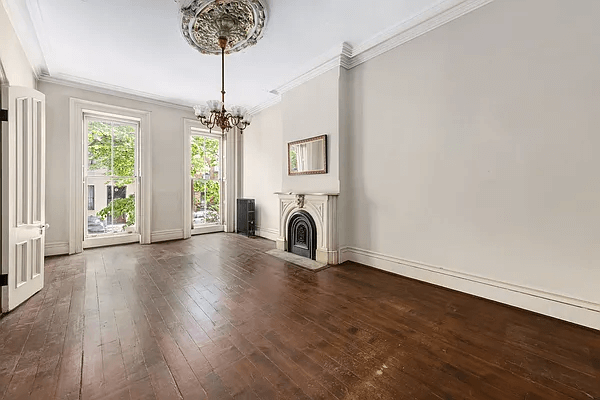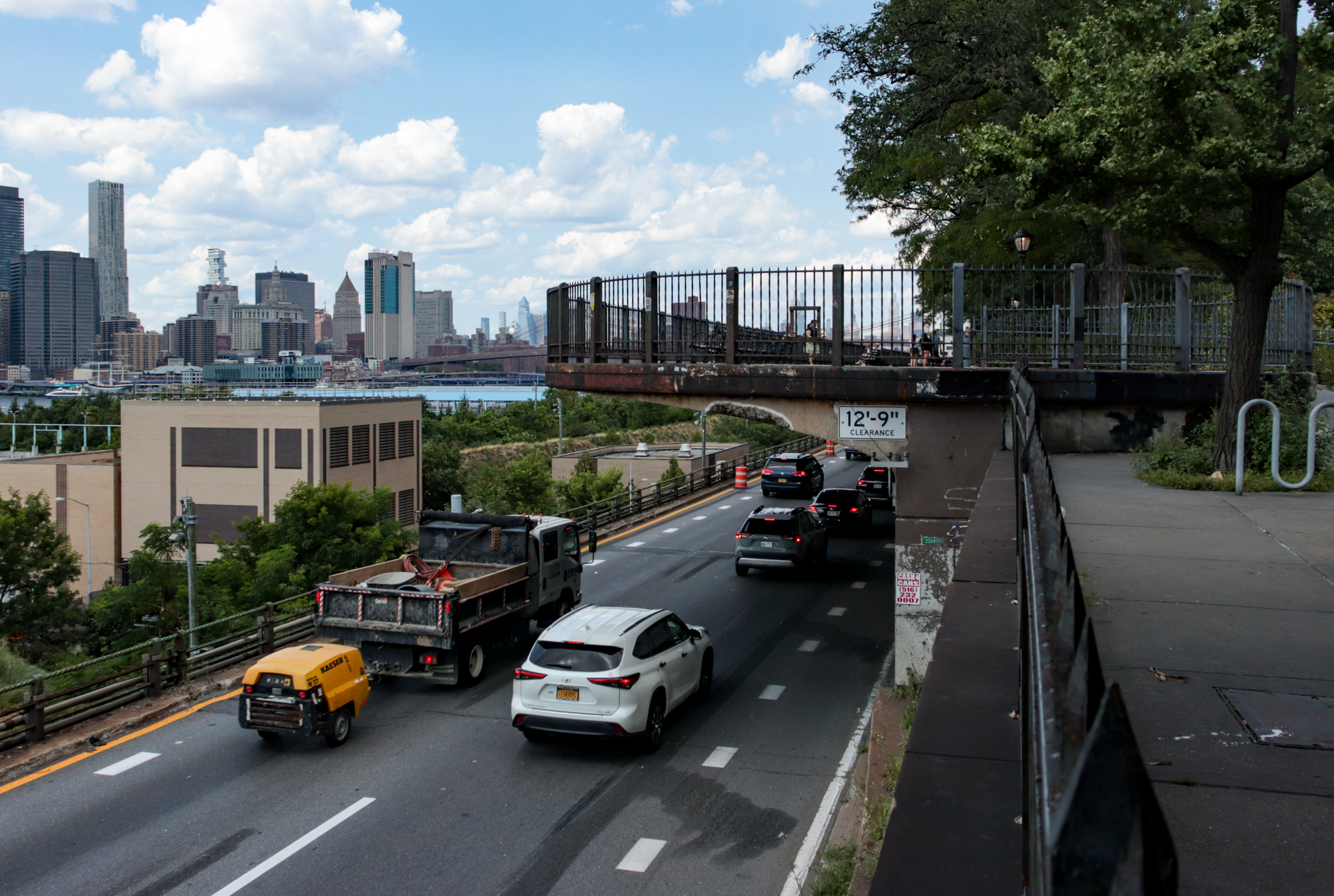Walkabout: The Brooklyn Architect Smackdown, Part 3
Read Part 1 and Part 2 of this story. Rudolf Daus was an extremely talented architect practicing in Brooklyn at the dawn of the 20th century. This talent, plus hard work and connections, had gotten him to the pinnacle of Brooklyn’s very crowded architectural mountain. There were only a handful of men who had his…

Read Part 1 and Part 2 of this story.
Rudolf Daus was an extremely talented architect practicing in Brooklyn at the dawn of the 20th century. This talent, plus hard work and connections, had gotten him to the pinnacle of Brooklyn’s very crowded architectural mountain.
There were only a handful of men who had his reputation, or got the kinds of commissions he was getting on a regular basis. In addition to residential architecture, he had put his stamp on the civic and commercial landscape, designing buildings for Brooklyn’s future, such as the Telephone Headquarters, the Republican Party’s Lincoln Club, the massive 13th Regiment Armory and several Carnegie financed libraries. His rise to prominence is told in Part One of this series.
In 1901, his latest project had been quite a coup – he was chosen to expand the Brooklyn Hall of Records, taking it from a small two story building, and doubling it in size to a much larger four story building. The Hall of Records was at the center of Downtown Brooklyn’s Civic area, and Daus’ building would be the talk of the town, and a monument to Brooklyn’s continuing growth. It would pay well, too.
It never hurts to have friends in high places, and Rudolf Daus was in tight with Brooklyn’s powerful Democratic Party boss, Hugh McLaughlin. Political power in Brooklyn had long been in Republican hands, but by the end of the 19th century, the Democrats in New York City were the new machine.
The business and community elite, who had been Republican since the Civil War, had been rudely bumped by Tammany Hall, which offered the common man, especially the Irish immigrant population, a place at the tables of power.
There were also many wealthy men in business who were Democrats, as many of their platform ideas appealed to them as well. Both parties certainly had their good and bad points. Like today, it was an interesting time to be in politics.
Daus’ political leanings are not known, he might not have even been a Democrat, and it seems unlikely that the Republicans would have chosen him to design their club, had he not at least made Republican sounding noises at the right time and place.
But be that as it may, he certainly knew how to connect with the right people for his own advancement. He was an excellent power player. He had been president of the Brooklyn chapter of the American Institute of Architects, the AIA, and had been on the mayor’s committee to choose the architects for the new Brooklyn Public Libraries that were to be financed by Andrew Carnegie.
Carnegie’s generous donations were making it possible for 21 new libraries to be built throughout Brooklyn. Each was to be architecturally significant, as these buildings would be centerpieces in their communities.
They would also be lucrative commissions for the architects, contractors and others in the building trades. Daus’ committee would look at designs, budgets and ideas, and pick those architects or firms that best suited each project. After much consideration, the commissions were handed out, and Daus gave himself four of the libraries.
That’s rather self-serving, and smacks of insider trading-like behavior, and it didn’t go down well with many members of Brooklyn’s architectural community. They took it to the AIA for review. Daus had also been a bit shady in his dealings with the Hall of Records, the story of which can be found in Part Two of this tale.
He had won the commission supposedly on the merits of his designs, and his ability to bring the project in under budget. His competition thought he won because he was buds with Hugh McLaughlin.
But no sooner had the project been begun, Daus totally changed his plans, scrapped his original design, and upped the budget, asking for more money than had been allotted. After many delays and obfuscations, the building was completed, but it didn’t look like the renderings Daus had submitted.
One of the other architects in that final round of consideration thought the new Hall looked more familiar than it should have. He thought it looked like his design. He also took his complaints to the press and the AIA.
In 1903, the double whammy against Rudolf Daus came before the directors of the AIA. He had been a past president of that august body, so it must have been doubly disturbing to him that his own organization was looking into his dealings.
The architect who accused him of appropriating his design was Frank J. Helmle, of Johnson & Helmle. They had been in the final three, when the judging for the Hall of Records contest was conducted.
Since the award of the commission, Frank Helmle had been busy himself, and by 1903 was now the Superintendent of Public Buildings for the City of Brooklyn. In that capacity, he would have been privy to any and all plans for the building, as well as thorough inspections, and would have seen every detail in the construction and design.
Helmle accused Daus of unprofessional conduct, and said that Daus had been awarded the job based on his own design, but that the end result had included many of his, Frank Helmle’s designs. Daus laughed off the charges, in talking to the New York Times, calling them “silly.”
He went on to explain that it was simple and straightforward: Frank Helmle’s designs called for the eastern walls of the old Hall to be torn down, which would have been expensive. Daus’ plans did not, and that was why Daus won.
But when the project was started, Daus had determined that the walls did indeed have to come down, so he had to change his own ideas. If they looked like Helmle’s, well, that was coincidence. Daus was certain that the AIA would see it his way, and that would be the end of that.
The charges against Daus by Helmle were backed up by the testimony of the Commissioner of Records, George E. Waldo. He and Daus had gotten into a heated battle of wills and money when the Hall was being renovated, because Waldo wanted to take money, which had been budgeted to him, to buy metal storage bins for the millions of city records.
Daus wanted to use that same money himself, for the building. Waldo eventually won, but the acrimony between the two men had been quite fierce. Now Waldo had a chance to get even.
The AIA commission looked at drawings and photographs of the Hall, as submitted by both men in the original contest, and in comparison to what had actually been built. The suggestion was made, according to sources, that during the competition, Helmle’s design had been judged the best, but Daus was given the job, and advised that he would do well to incorporate some of Helmle’s designs into his final product.
That, of course, led to invariable inquiries as to political connections, because if Helmle’s design was the best, why didn’t he get the job?
But that was not the only reason the AIA wanted to speak to him. The second charge before them was much more serious. On May 21st, 1903, formal charges were brought against Daus, as well as against Axel Hedman, who had been secretary of the Brooklyn AIA when Daus was president.
Those charges accused them of conspiracy in the choice of architects for the Carnegie libraries. The news came out that Daus, as head of the Carnegie committee, had asked for the backgrounds of those competing for the Carnegie jobs, and was prejudiced in favor of those who like him, had been educated abroad.
When the contracts were awarded, five of the winners had been educated outside of the United States. Axel Hedman was in trouble, because as Secretary, he had complied with the request.
The Brooklyn chapter of the AIA had recently passed a new rule that stipulated that any requests from the Carnegie Committee had to go the AIA Committee on Professional Practice.
This request had not. Also, all of the correspondence between the Carnegie Committee and Secretary Hedman had suspiciously been lost. Walter E. Parfitt had called for an investigation on the incident, as well as the Hall of Records allegations, and asked both Hedman and Daus to show up for the inquiry.
Hedman came, and answered questions for over two hours. Daus did not deign to make an appearance. The committee did not take a vote, which bothered Hedman, who wanted to be done with the incident.
He felt that they were judging him, instead of gathering facts. John J. Petit, who was the current Secretary of the AIA, issued a statement saying that the investigation would continue. He also said that Mr. Daus would be asked again to appear, and that the matters before the board would be decided. No one else involved made statements. What happened after that never made the papers.
The architect’s smackdown was more or less over. Frank Helmle had a stellar career, and didn’t need the Hall of Records to make his mark. He would design the Bossert Hotel, the Jenkins Storage Company on Nostrand Avenue, as well as St. Barbara’s and St. Gregory the Great churches, in Bushwick and Crown Heights, respectively.
He resigned as Superintendent of Public Buildings so he could design a few public buildings of his own, most notably the Prospect Park Boathouse, and Tennis House, as well as the Communications Building for the Fire Dept. on the edge of the Botanical Gardens. He also designed park shelters at Fulton and MacGolrick Parks.
Axel Hedman was in the midst of his own stellar career, and this kerfuffle didn’t hamper him, either. He ended up designing over 300 row houses in Brooklyn that we know about, as well as hundreds of flats buildings, and a church, public bath house, and the renovation of the courtroom in Borough Hall.
Today his row houses are highly prized in all of the many neighborhoods they appear in. Walter Parfitt was one of the Parfitt Brothers, responsible for all kinds of superior buildings throughout Brooklyn, including St. Augustine’s RC Church in Park Slope, and the Montague Apartments in Brooklyn Heights.
John J. Petit was the chief architect for Dean Alvord’s Prospect Park South development, and was the designer of many homes and commercial buildings in both Brooklyn and Manhattan. He was also the chief architect for the Dreamland Amusement Park in Coney Island. Everyone involved here was already, or would become, extremely well respected and successful.
Rudolf Daus had many more fine buildings in his future, including banks in Manhattan as well as projects for the Catholic Church, more buildings for the Telephone Company, and private commissions. He was president of the Society of Beaux-Arts Architects, where they no doubt, compared their educations at L’Ecole des Beaux-Arts, and told stories about their school days in France.
Daus really was a snob and an elitist. His combative and condescending manner was probably his biggest flaw. But talent he had in great abundance. It all took a toll, and by the age of 54, he had to retire, due to ill health. He moved to France, and died there in 1916.
His obituary here gave no clue to the difficulties or shadows on his professional life. It read, “His work will always characterized by its dignity and strength, and none ever strove in a nobler way and held higher the standard of his profession.”









What's Your Take? Leave a Comment